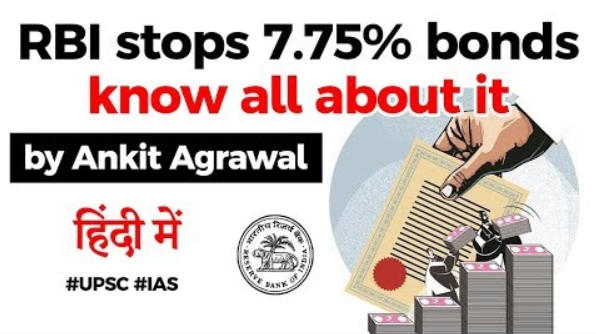Table of Contents


WHAT ARE 7.75 PER CENT RBI BONDS?
- The 7.75 bonds 2018 were issued with effect from January 10, 2018 and were available for subscription to resident citizens/HUF to invest in a taxable bond.
- While one bond was of Rs 1,000 each, the bonds had no maximum limit for investment.
- The bonds had a 7-year lock-in period from the date of issue, but, it permitted premature encasement to individuals who were 60 years and above.
- Interest on these bonds will be taxable under the Income-tax Act, 1961.
WHAT HAS HAPPENED NOW?
- The government has withdrawn these bonds with effect from Friday and therefore it will not be available for investors to invest.
- This means it is only ceasing fresh issuance and not redeeming those already invested.
HOW WAS THE DEMAND FOR THIS BOND?
- Investment advisors say that while it was mostly used by HNIs to invest,
- The demand for RBI bonds went up significantly over the last couple of months as investors turned risk averse.
RETURN ON THIS BOND?
- As the 75% RBI bonds were taxable instruments, the interest income on it would be taxable at the marginal tax rate.

- For those having income of over Rs 5 crore and having interest income from these bonds, the return would be 44%.
- For those falling in the tax bracket of 30 per cent, the return from these bonds would stand at 5.4%.
- For those falling in the lowest tax bracket of 10 per cent, the post-tax return would be 975%.

WHY THE CUT IN RATES?
- The interest rates have been on a decline since the global growth rate projections have been brought down following the spread of coronavirus Pandemic.
- The Reserve Bank of India first announced a 75 basis point cut in repo rate on March 27, 2020 to 4.4% and then again announced a cut in repo rate by 40 basis points to 4% on May 22.
- A cut in repo rates not only reduces the rate at which commercial banks borrow from RBI but also leads to a cut in deposit and lending rates for banks.
Latest Burning Issues | Free PDF






















 WhatsApp
WhatsApp